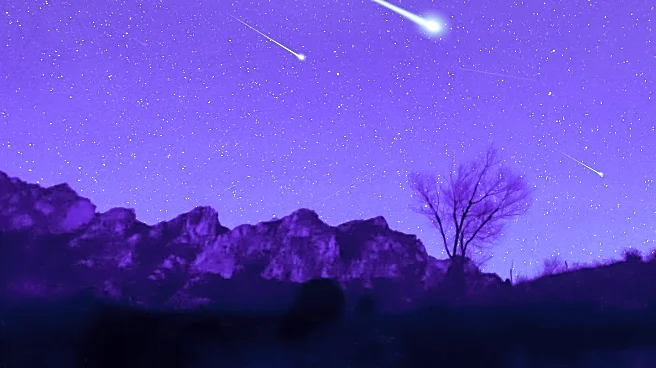Rapid Read • 8 min read
Michigan residents have the opportunity to witness the sturgeon moon, which peaked on August 9, but will still appear full on August 10. The moonrise times vary across different regions in Michigan, with Lansing seeing the moonrise at 9:40 p.m., Detroit at 9:34 p.m., Traverse City at 9:47 p.m., and Sault Ste. Marie at 9:44 p.m. Additionally, the Perseid meteor shower is visible in the Michigan skies, providing a celestial light show that will continue for a few more weeks. The sturgeon moon is named after the freshwater fish that was once abundant in the Great Lakes, and it is not classified as a supermoon.
AD
The sturgeon moon and Perseid meteor shower offer a unique opportunity for Michigan residents to engage with astronomy and appreciate natural phenomena. Such events can foster community interest in science and the environment, encouraging educational activities and public gatherings. The visibility of these celestial events can also boost local tourism, as enthusiasts travel to areas with optimal viewing conditions. This engagement with natural events highlights the importance of preserving dark skies and reducing light pollution, which can impact the visibility of such phenomena.
Following the sturgeon moon, the next lunar phases include the last quarter on August 16 and the new moon on August 23. Residents can continue to enjoy the Perseid meteor shower for the next few weeks. As the moon transitions to its waning gibbous phase, it will still appear full to the naked eye for a few days. These events may prompt local observatories and astronomy clubs to organize viewing sessions and educational programs, enhancing public interest in astronomy.
The sturgeon moon's historical significance, tied to the sturgeon fish, reflects cultural and ecological aspects of the Great Lakes region. This connection underscores the importance of conserving local wildlife and habitats, as the sturgeon fish has become less abundant due to environmental changes. The moon's naming tradition also highlights the cultural heritage of Native American communities who relied on the sturgeon as a food source.
AD
More Stories You Might Enjoy












